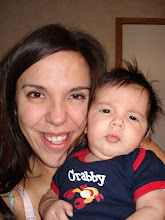Table of Contents
1 Little Bo Beep
2 Little Boy Blue
3 Hey, Diddle, Diddle
4 Little Bunny Foo Foo
5 Hickory, Dickory, Dock
6 Old Mother Hubbard
7 The Farmer in the Dell
8 Eencey Weencey Spider
9 Baa, Baa, Black Sheep
10 Kookaburra
11 Mary Had a Little Lamb
12 Three Blind Mice
13 One, Two, Three, Four, Five
14 I Saw a Ship A-Sailing
15 All Around the Mulberry Bush
16 As White as Milk
17 Bow, Wow, Says the Dog
18 Cold and Raw the North Wind Doth Blow
19 Do You Know the Muffin Man
20 Humpty Dumpty
Description:
1. Why this poem was chosen: This poem was one of my childhood favorites. How it could be integrated in the classroom: I can conduct a lesson over mammals or sheep (specifically).
2. Why this poem was chosen: This poem was one of my sister’s and my childhood favorites. How it could be integrated in the classroom: I can conduct a lesson over mammals or farm animals (specifically).
3. Why this poem was chosen: I had this book as a child. How it could be integrated in the classroom: I can conduct a lesson over word endings or spelling patterns.
4. Why this poem was chosen: The children in my preschool classroom really enjoy this poem (they have even memorized it). How it could be integrated in the classroom: I can conduct a lesson over cause and effect, manners, or following rules.
5. Why this poem was chosen: This poem was one of my childhood favorites. How it could be integrated in the classroom: I can conduct a lesson over syllables or even about telling time.
6. Why this poem was chosen: This was also one of my first poems to read. How it could be integrated in the classroom: I can conduct a lesson over rhyme, rhythm, site words (high frequency words), and/or spelling patterns. (I would substitute the word beer with root-beer).
7. Why this poem was chosen: I love to sing this poem out. How it could be integrated in the classroom: This can help with memorization.
8. Why this poem was chosen: This poem was one of my childhood favorites and it is easy and fun to remember and act out. How it could be integrated in the classroom: I can conduct a lesson about climate/weather.
9. Why this poem was chosen: This poem was one of my childhood favorites. How it could be integrated in the classroom: I can conduct a lesson over one-to-one correspondence and/or onomatopoeia.
10. Why this poem was chosen: I like to sing this poem out. (The children enjoy singing along as well). How it could be integrated in the classroom: I can conduct a lesson over monkeys and/or site words (high frequency words).
11. Why this poem was chosen: I like to use puppets when I recite it to my preschool class. How it could be integrated in the classroom: This poem helps develop memorization skills, and sequence.
12. Why this poem was chosen: This poem was one of my childhood favorites. How it could be integrated in the classroom: The children can be asked insightful questions such as: “Do you think mice actually need their tails?” “Why/why not?”
13. Why this poem was chosen: This poem is short and to the point. How it could be integrated in the classroom: Children can practice their numbers and/or counting.
14. Why this poem was chosen: This poem is especially fun because I enjoy the surprise at the end. How it could be integrated in the classroom: I can conduct a lesson over rhyme, sequence, and descriptions.
15. Why this poem was chosen: The visual aides that accompany this book are amazing. How it could be integrated in the classroom: This poem teaches rhyme and rhythm
16. Why this poem was chosen: I like this poem because I love milk.. How it could be integrated in the classroom: I can conduct a lesson over the importance of drinking milk. We can talk about the food pyramid. However, similes can also be taught with this poem.
17. Why this poem was chosen: This poem is creative. How it could be integrated in the classroom: I can conduct a lesson about onomatopoeia and animal sounds.
18. Why this poem was chosen: This poem was is short and easy to remember and the children can talk about the climate/weather in our home town. How it could be integrated in the classroom: I can conduct a lesson over geography (and/or direction) and climate/weather.
19. Why this poem was chosen: This poem was one of my childhood favorites because we always go to bake a “muffin man” to go with the lesson. How it could be integrated in the classroom: I could conduct a lesson over mammals or sheep (specifically).
20. Why this poem was chosen: This poem was one of my childhood favorites.
How it could be integrated in the classroom: I could conduct a lesson over cause and effect.
Bibliography:
Wildsmith, Brian. Mother Goose: A Collection of Nursery Rhymes. New York, NY: Franklin Watts, Inc., 1964.


No comments:
Post a Comment